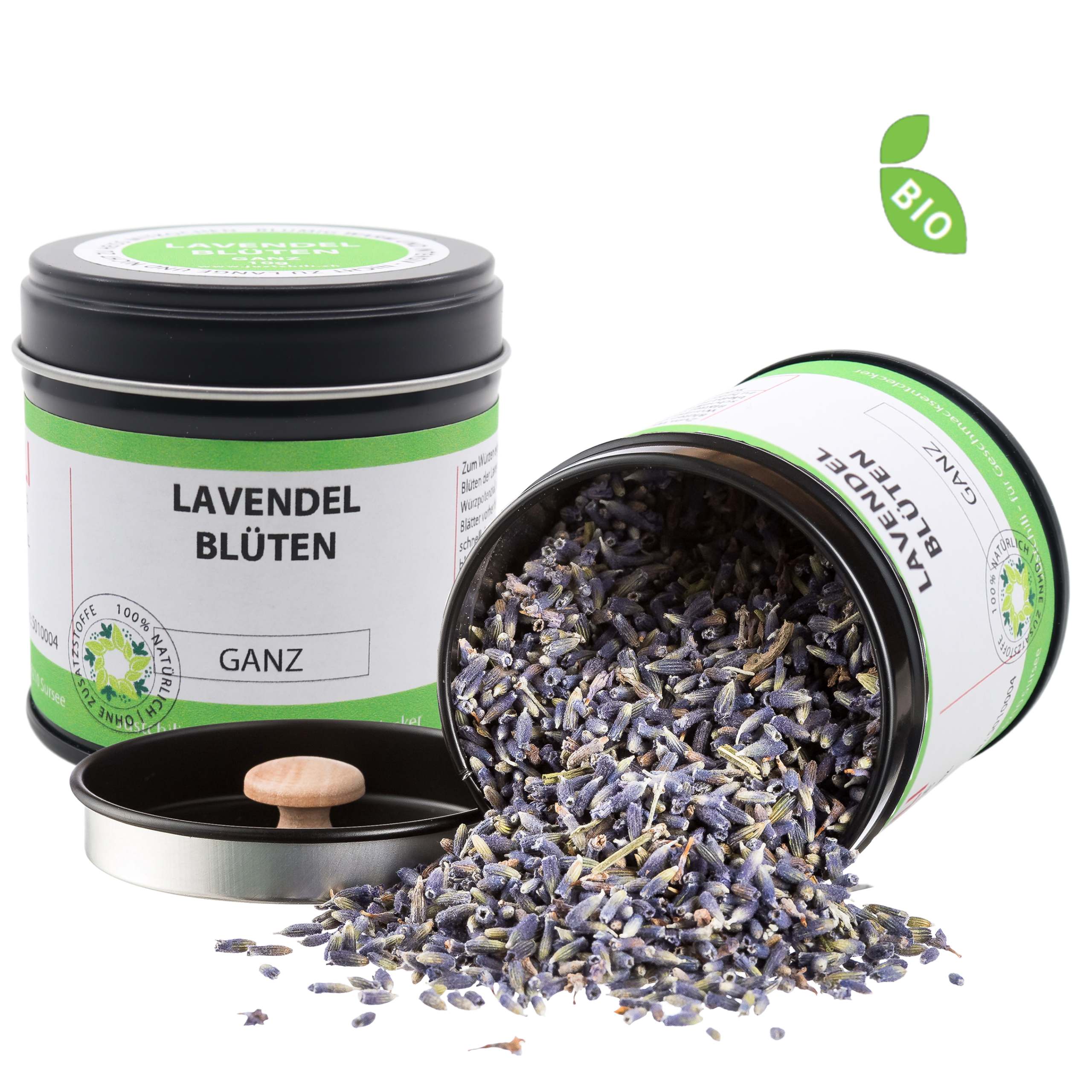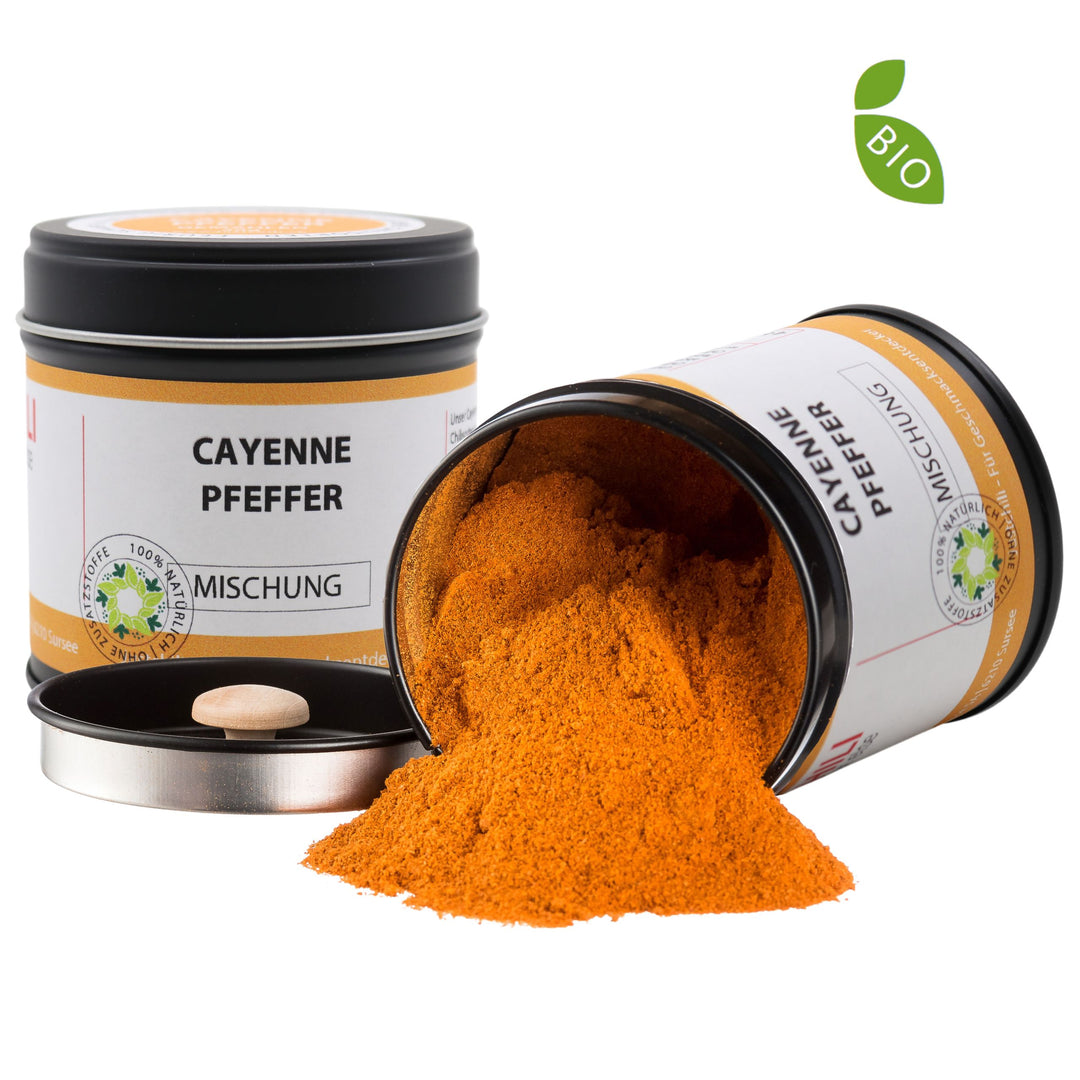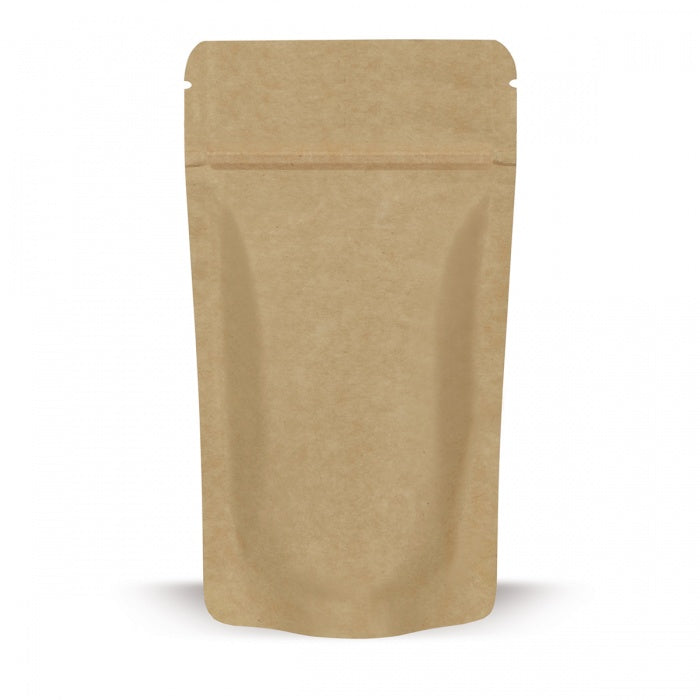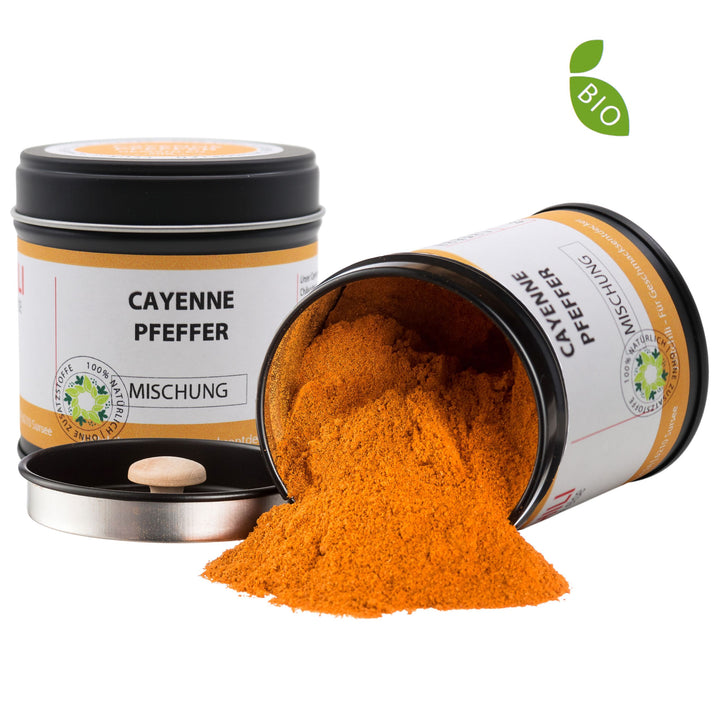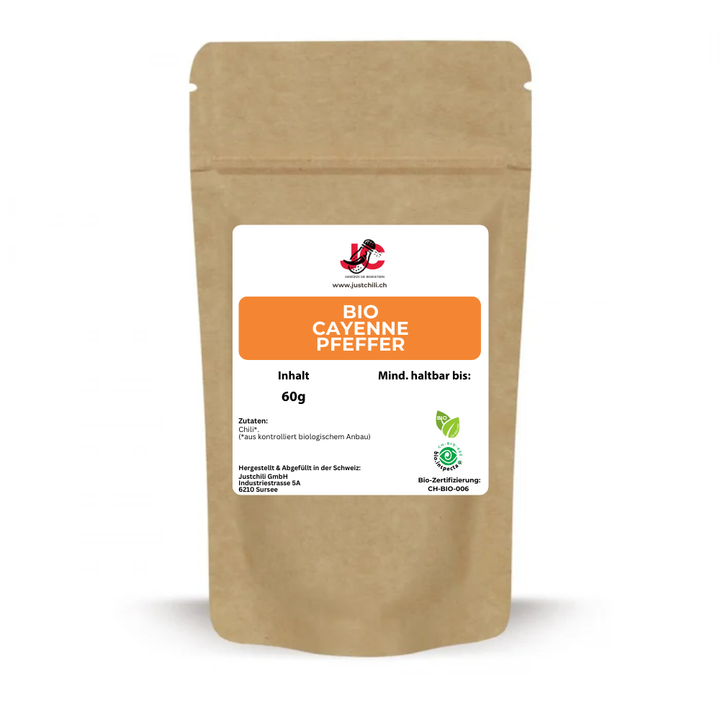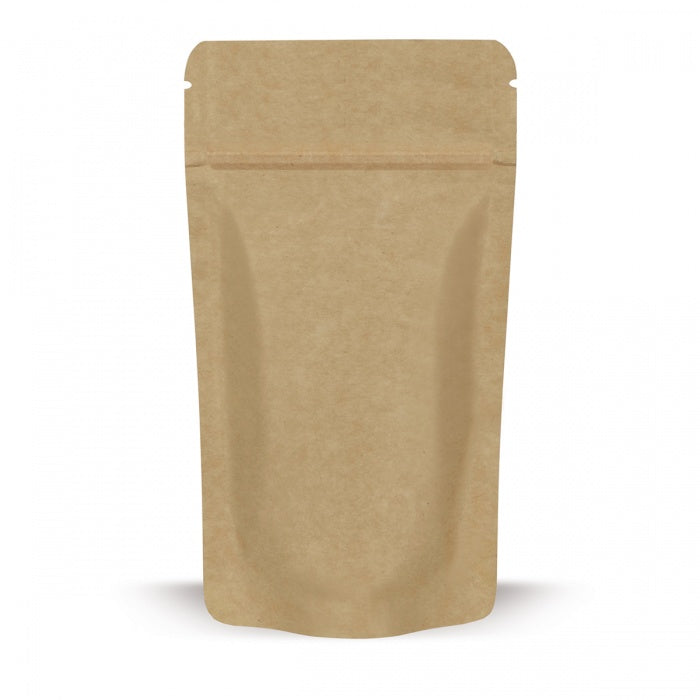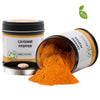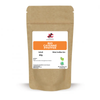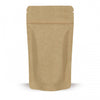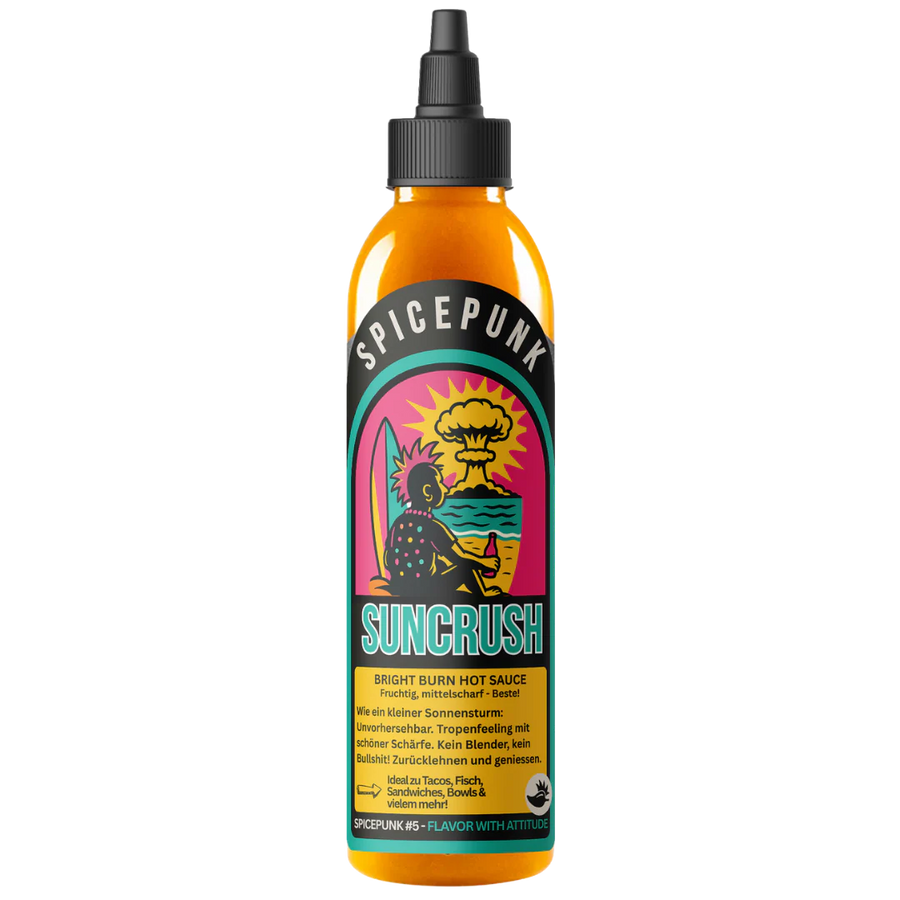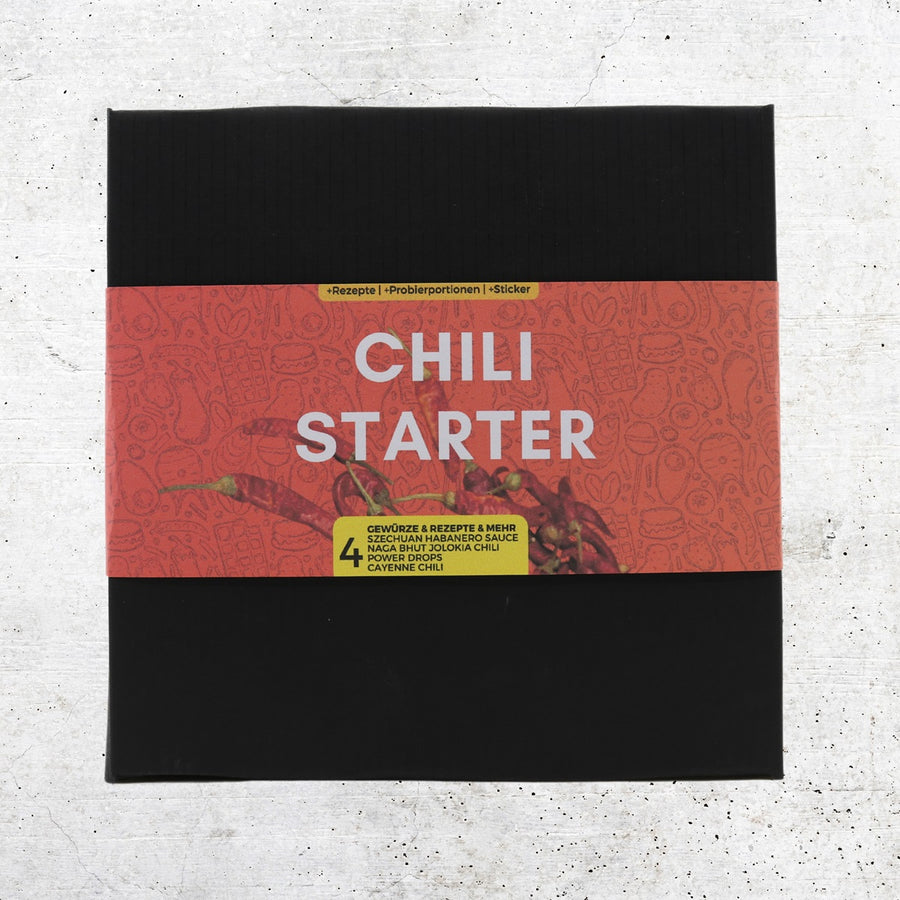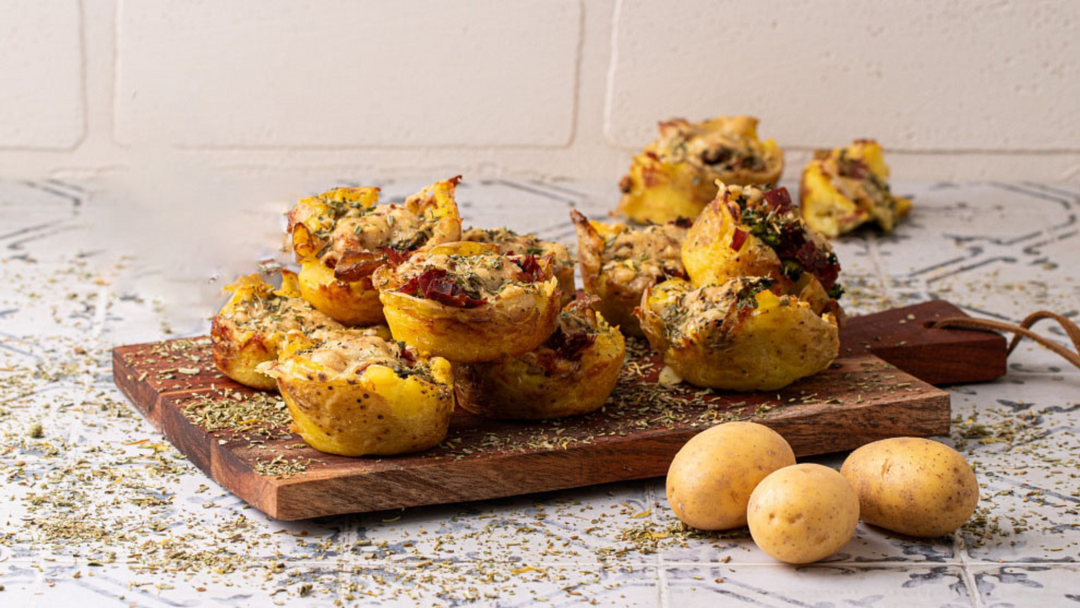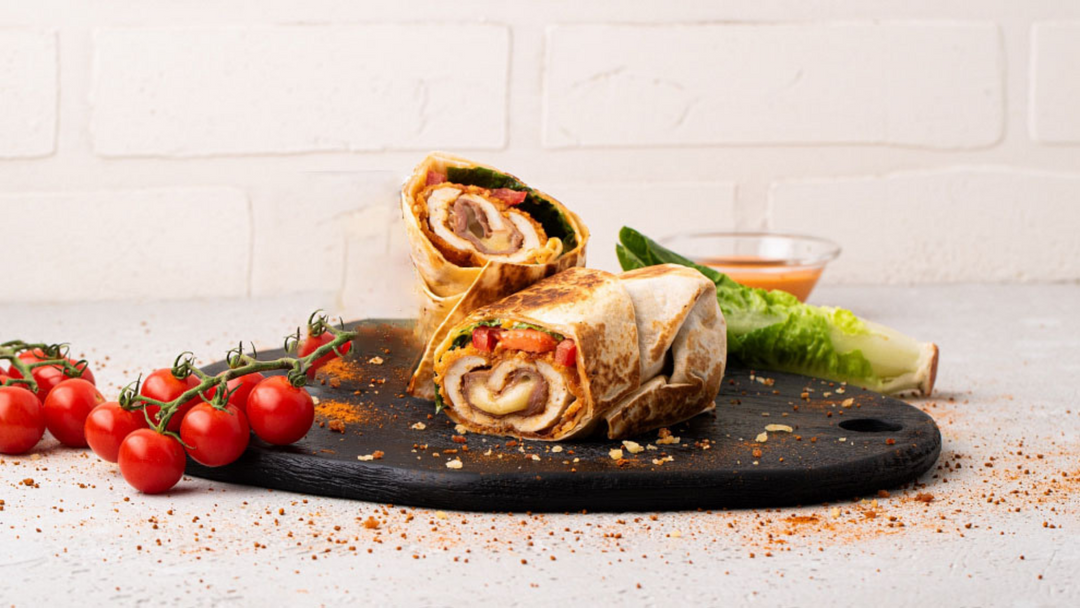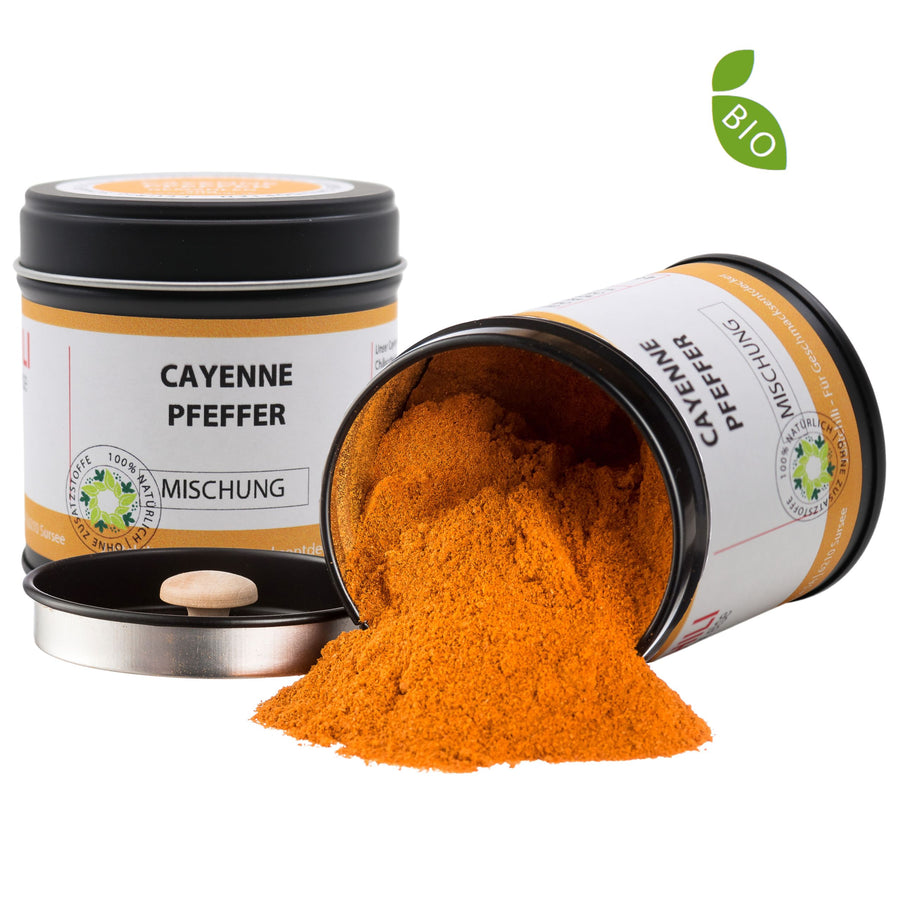Weil gutes Essen happy macht.
Damit Du immer etwas Neues erlebst
Damit jedes Gericht gelingt & schmeckt
100 % natürlich & ohne Zusatzstoffe
Our cayenne pepper is fiery hot and for good reason, because contrary to what the name suggests, it is chili. More specifically, the dried, hot fruits of the Cayenne chili variety, which you can use to perfectly spice up a variety of dishes.
AROMA AND USE
During the grinding process of the chili peppers, not only the pulp but also the septa and seeds are ground. This gives our organic cayenne pepper a fiery spiciness that clearly trumps that of our chili flakes, but is still not biting. In addition to the pure spiciness, the aroma of the cayenne pepper is slightly reminiscent of that of a sweet, fruity paprika. However, the strong spiciness comes to the fore in comparison to the delicate aroma. That's why it's worth combining cayenne pepper with flavorful spices such as coriander, ginger, cumin or cardamom, for example in a curry or rice pan with colorful vegetables.
Get ready for a taste explosion! This property is also the reason why cayenne pepper is used not only in the cuisine of its home continent of South America. Basically, you can even take a little culinary trip around the world with your spice jar: from Portuguese fish soup to Hungarian goulash to savory crackers that go perfectly with a French cheese plate. From there we move on to Indian masalas and other fiery spice blends, such as our Jamaican Jerk.
Cayenne pepper is also an ingredient in some popular hot sauces such as Sambal Oelek. Maybe your little kitchen trip will take you directly to Asia, where it appears particularly frequently in Indian, Indonesian and Chinese rice dishes.
Creole and Cajun cuisine, on the other hand, are somewhat less well known in Europe. Cayenne pepper is also used here, for example in aromatic dishes such as gumbo or jambalaya, which go back to the descendants of French settlers in the American state of Louisiana. The slightly more time-consuming preparation is worth it, because it sets off an absolute firework display for the palate.
Our cayenne pepper is a real globetrotter and therefore extremely versatile. It goes perfectly with seafood, fish and meat, whether briefly fried, braised or as a ragout. Like most other chilies, the mixture refines salsas, chutneys, marinades, barbecue sauces, dressings and spicy dips. A pinch of cayenne pepper also brings a breath of fresh air to egg dishes, be it breakfast eggs, Russian eggs or an omelette. The fun doesn't stop with dessert either. Chili and chocolate are a match made in heaven. The fruity, sweet aroma of cayenne pepper with its spiciness goes perfectly with chocolate, chocolate cake and soufflé. There are practically no limits when it comes to dessert; Cayenne pepper rounds off ice cream, creams, parfaits, panna cotta and pudding. For a good start to the day, you can also sprinkle a pinch over your coffee, smoothie or cocoa.
Fun fact
The substance capsaicin contained in all chillies is responsible for our sense of spiciness. By the way, this varies from person to person, which is why the following applies especially to sharpening beginners: Less is more. Capsaicin stimulates our pain and heat receptors, so it “burns” when we eat spicy food. But humans have also used this effect in other ways. Capsaicin is used, for example, as an ingredient in heat patches. It is also contained in pepper spray. You can also use this in your kitchen. Especially on particularly cold winter days, sometimes there's nothing better than a warming soup.
ORIGIN
The cayenne pepper originally comes from Latin America. At least that's what prehistoric burial sites in Peru suggest, the indigenous people's cultivation attempts around 7000 BC. BC. Thousands of years later the Spaniards discovered it there on their conquests. The fact that cayenne pepper is not a spice from the pepper plant, but rather chili, is said to have been a translation error. In any case, the Spanish, and shortly afterwards the Portuguese, discovered chili powder as a substitute for black pepper. Back in Europe, the spice quickly gained popularity and spread from southern Europe across Eurasia and its major cities. In the 18th century, cayenne pepper became all the rage in England, where it was used to season newly discovered dishes from the Indian colonies. However, it is not entirely clear where the name cayenne pepper comes from. A popular theory about the origin of the cayenne pepper's name revolves around the port city of Cayenne in French Guiana, from where the chili was shipped all over the world. The roots of the term “Cayenne” may also lie in the Indian Tupi language, where “kyinha” means something like “hot pepper”.
handling
Be careful when handling cayenne pepper - it is quite hot. To be precise, it has around 30,000 Scoville on the spiciness scale (for comparison: a sweet pepper is around 0 to 10 Scoville). Especially when cooking, it's better to season lightly at first and then re-season several times if necessary. The spiciness of the chili mixture develops again under the influence of heat. If things get a little too dicey, it's best to grab a glass of milk or a piece of bread. Water, on the other hand, has a counterproductive effect; it only distributes the capsaicin in the mouth and makes the whole thing worse. However, you don't have to immediately flush the contents of your pot down the drain if there is a little more cayenne pepper than planned. As a rule, dairy products such as cream, a little sugar or honey or more broth/vegetables help to at least offset the spiciness to some extent. Please make sure to store the aroma can away from children and pets. If the eye becomes irritated, rinse it thoroughly and, if necessary, consult a doctor.
TIP
Try our cayenne pepper in a spicy, spicy salad dressing consisting of: cayenne pepper, fleur de sel, honey, lemon juice and a little oil.
Ingredients: Chilis*, dried, ground.
*from controlled organic cultivation. Certification: CH-BIO-006
TOPSELLER & NEUHEITEN
View all
Wir geben alles für besten Geschmack
Warum Just Chili?
- 100 % natürliche Zutaten: Geniesse reine Aromen ohne künstliche Zusatzstoffe.
- Bio-zertifizierte Qualität: Unsere Gewürze stammen aus fairem und nachhaltigem Anbau.
- Vielfalt und Inspiration: Von klassischen Gewürzsets bis hin zu exotischen Chili-Produkten und Saucen bieten wir eine Palette, die jede Küche bereichert.
- Geschenkideen: Überrasche mit liebevoll zusammengestellten Gewürzgeschenksets.





